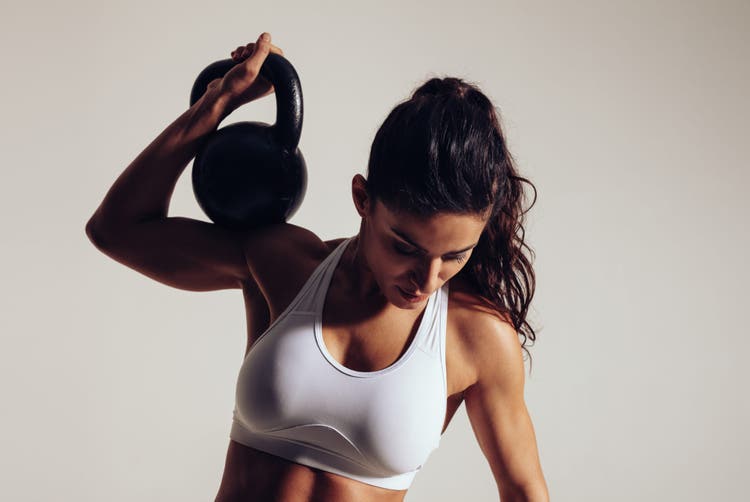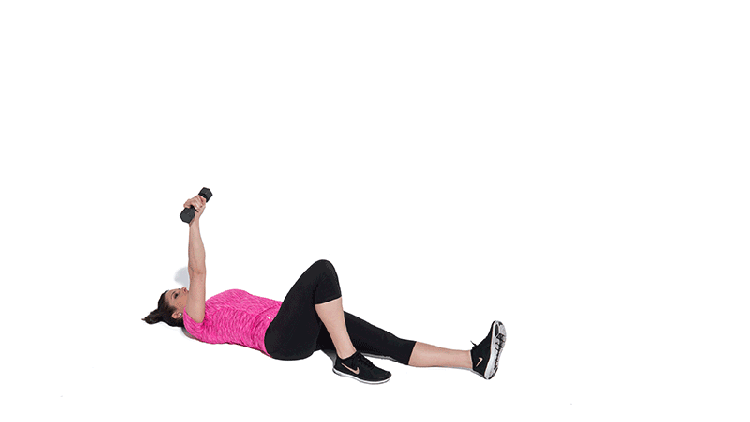Why Functional Training Is a Great Way to Move Your Body for the Long Run

Our bodies are built to move. Not only is movement good for our waistline, but it’s also good for our energy, sleep, bone density and so much more. But many of us think of “movement” as hopping on a treadmill for an hour. The truth is that our bodies need different types of movement to function—and age—well. Experts call this functional movement or functional training.
What is functional training?
While functional training has taken on many descriptions of late, according to Michol Dalcourt, founder of Institute of Motion and creator of ViPR, the correct definition of functional training is whole-body, multidirectional, task-driven exercise that integrates muscle action, is three-dimensional and has variable movement.
“And by task I don’t mean simply lifting weights up and down 15 times; I mean task as it transfers to real life,” Dalcourt says. “Functional training is important as it seeks to map gym movements to that of the outside world. The muscles, nerves and joints all integrate together to act as one system in movement—precisely the way they would in life.”
What does it mean to be three-dimensional? “To suggest that we operate just moving forward and back is misguided as it relates to the human structure,” Dalcourt says. He cites this example: If someone were to record a video of an individual doing chores around the house, at no point would that person be working only in the sagittal plane. They would be working in a combination of all three planes: sagittal (forward and backward), frontal (side to side) and transverse (rotation).
“And that’s life. Every tissue has a three-dimensional quality, and if we just pick one plane of motion, we’re not authenticating muscle architecture, structure and behavior. Additionally, we limit skin and fascia’s adaptation, as well as bone and joint mechanics—all of which integrates to move seamlessly,” Dalcourt continues. “So we need an opportunity to be able to express motion three-dimensionally” and train according to our body’s design.
What is variable movement? It’s the opposite of repetitive movement. For example: Runners get repetitive stress injuries because they run on the same surface, in a straight line, without directional changes. “That’s actually very contrary to our design,” Dalcourt says. “Our biology grew up with rocks and pebbles and dirt and mounds under our feet as we walked. We had to run around trees and rocks, and then we actually varied our run cadence. But now we run at the same pace in the same direction on the same terrain, and we watch runners get injured over and over again. It’s a very odd environment that we have introduced to our biology.”
Variable movement, Dalcourt says, is about providing our bodies with a certain amount of varying input to exist optimally—changing the speed of motion, the force, the angle, so that our bodies can process it and get more out of the movement. This also means physical breakdown may happen more slowly over time. “Too little variability is rigidity, and too much variability is chaos,” he says. “We’ve created a world that is too predictable and too repetitive, and the body breaks down. We see evidence of it all the time.”
Why do we need functional training?
It is very hard for the body to isolate a muscle, Dalcourt says. In fact, the body, given the choice, doesn’t want to isolate a muscle. For example, you might think of throwing a ball as an arm exercise, but it’s not. While the expression of the motion appears to come from the arm, it’s the coordinated effort of your feet pressing into the ground, your legs and your torso as it rotates to deliver the throw.
The more we can replicate that compound movement, the better, Dalcourt says. “That has a multitude of positive effects: We gain intermuscular coordination.” That translates into better movement in every activity in life.
Is it wrong to isolate muscles to work them (example: “leg days”)? No, Dalcourt says, not if you’re a bodybuilder training for a competition. However, for many, if your goal is to be athletic, functional and to have movement proficiency, or if you’re an older adult and you want to reduce the risk of falling, then you should seek to incorporate safe functional training into your routine.
How can I implement functional training?
Dalcourt recommends adding a few functional movements to the end of your workout. Chopping or anti-rotation patterns, like wood chops, and many ViPR and kettlebell exercises, like the windmill or Turkish get-ups, are functional patterns.
“There is a category of exercises that we call ground-to-standing patterns, which is you organize yourself from the ground to a standing position, then back to the ground. All are functionally based, and all of them absolutely carry over to mobility and stability,” Dalcourt adds. “There are hundreds of ground-to-standing patterns, and if you pick two or three and create proficiency in those, [you] would start to be more efficient” in your whole-body function, as opposed to building efficiency that’s specific to regions of your physiology.”
Windmill
https://www.youtube.com/watch?v=7e-EEdBCrzc
Wood Chop
https://www.youtube.com/watch?v=MsgByV0NsXA
Turkish Get-Up

Photo credit: jacoblund, Thinkstock; Mark Kuroda, kurodastudios.com (2); Tom Casey, box24studio.com